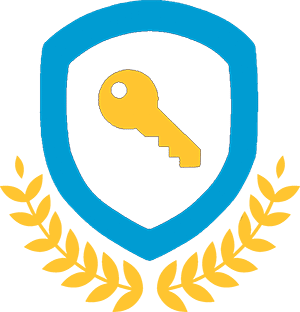What is effective advocacy for justice-impacted people? It starts with a campaign designed to build solutions to problems. Like any other solution, it requires the concept of visualize, plan, prioritize, and execution.
What is Effective Advocacy for Justice-Impacted People?
People in prison should have examples of effective advocacy. That way, they can craft a strategy leading to better outcomes. I’d like to share what I learned about advocating from inside a federal prison and from outside.
In truth, effective advocacy requires a long-tail process, patience, and tolerance for disappointment. To advocate effectively, a person needs perspective, as well as both depth and breadth of experience. Ultimately, it’s similar to building a business or solving any problem.
- First, we need to define success as the best possible outcome.
- Second, we must create a systemic plan using all available resources and mechanisms.
- Third, we need to put priorities in place.
- Fourth, we need to execute our plan, making daily progress along the way.
Who am I to offer this guidance?
For those who don’t know, my name is Michael Santos. After concluding a 26-year odyssey that carried me through federal prisons of every security level, I began building a career to influence better outcomes for all justice-impacted people. I finished my obligation to the Bureau of Prisons in August 2013 and received early termination of Supervised Release, parole, and special parole.
The various books I published show the strategies that worked for me. I hope that members of our community will see that I’ve never asked anyone to do anything I didn’t do while incarcerated.
Lessons from Earning Freedom:
If you haven’t read Earning Freedom, you’ll see the strategies that worked at various stages of my journey. I offer many examples that show a long-tail, self-advocacy campaign.
During my first Unit Team meeting, administrators told me they would never authorize me to transfer from a high-security prison to a lower-security prison. The chapter shows the methodical strategy that allowed me to get the desired outcome. That strategy did not include any of the following tactics:
- Complaining that it wasn’t fair,
- Saying it wasn’t my fault,
- Blaming my attorney for the bad decisions that led me into the penitentiary, or
- Filing frivolous paperwork that did not have a chance of succeeding.
As shown through the story, I created tools, tactics, and resources that would further a systematic plan to get the outcome I wanted. To improve my chances for success, I had to master the following subjects:
- The custody and classification policy.
- Understanding of the BOP’s regional system.
- Knowledge of stakeholders who could help me influence the system.
- Persistence.
The plan I launched required me to leverage outside resources, including a mentor, a professor, a publisher, a BOP administrator in DC, a regional director, and a warden.
An alternative may have been to complain that the system wasn’t fair. Many people with whom I served time used that approach to self-advocacy. They rarely got the results they wanted.
We distribute Earning Freedom to our community because we want people to see the many examples of advocacy in action. It isn’t the only strategy. But it worked for me in prison, and we’re still using it now.
Prison Professors Organization:
When I got out of prison, I committed to advocating for other justice-impacted people. Simultaneously, I had to earn a living. I went into the prison system at 23 and didn’t finish my obligation to the BOP until I was 49. I had to create a systemic plan in the same way that every other person would need to resolve problems.
I would use the same lessons I used in prison to build that advocacy strategy. That strategy required persistence and included many moving parts. To be effective, we would need the following:
- Funding,
- Scale,
- Assets,
- Influence,
- Data
- People
For that reason, we created a consulting business that would offer services to justice-impacted people. The consulting venture would generate financial resources we could use to hire other justice-impacted people and to build our advocacy strategy.
The advocacy strategy would include building a nonprofit, Prison Professors. One message I consistently give is that through our nonprofit, people can receive everything they need to advocate for themselves—without paying a single penny. They simply must do the work, just like we have to do the work.
If they want others to work for them, however, they can hire our consulting companies.
Some members of our team devote their time to providing one-on-one services through our consulting company for paying customers. Others, including me, devote all time to the nonprofit. The nonprofit has one stated mission: To make an impact on improving outcomes for people in the criminal justice system.
Although consumers do not pay for services through our nonprofit, Prison Professors represent an integral part of our strategy. We can accomplish goals with the nonprofit that would not be open to us through a for-profit entity. For example, a nonprofit allows us to:
- Build a voice with the media,
- Hire subject-matter experts that would not provide their expertise to a for-profit entity—even though some of those experts charge us more than $500 per hour for their time,
- Open and nurture relationships with senior leaders in the Bureau of Prisons, US Probation, and even the federal judiciary,
- Collect data that we can use to bolster arguments for reform,
- Develop a voice that will prove more influential and bring change to the system,
- Provide an employment bridge for formerly incarcerated people.
What We’re Doing Now:
As the nonprofit founder, I’m enthusiastic about the opportunities that Prison Professors is opening now. In November, I’ll visit four federal prisons to make presentations. After the federal government passes its budget, I anticipate more opportunities to bring our programs into prisons. We’re now working to qualify as a “Productive Activity” that will help more people receive time credits that apply to their sentence reductions or earlier transition to home confinement.
Each time I present, I will ask people in prison to collaborate in these advocacy efforts: To persuade administrators to open more opportunities for people to earn freedom, we need to show that people inside 1) avoid disciplinary infractions, 2) complete their obligations with FRP, and 3) participate in self-development programs.
The data we collect will either help or hurt our efforts to advocate for change.
Another effective program we’re working on includes expanding our relationships with tablet providers. We are pursuing a strategy to open access to our program to more than 500,000 people in state and federal prisons using tablets. Through those efforts, we also anticipate collecting data that will become crucial to our advocacy efforts, making us more effective at getting the results people in prison want.
We are building a comprehensive ecosystem for advocacy, and we believe we’re stronger when we work together with all justice-impacted people.
How to Connect with Us:
We invite any person in federal prison to receive our general newsletter. They may send an invite to the following address: [email protected]. Through that general email, we disseminate information we’re learning and invite people to share what they’re seeing. That information can prove helpful in our advocacy efforts to improve outcomes for all justice-impacted people.
Those who paid the consulting companies that support our nonprofit have a separate email address reserved for the customers that paid for services.
What we Cannot Do:
We are not lawyers, and we cannot change the past. As an advocacy company, we strive to improve outcomes for all justice-impacted people. Previously we published and distributed an article called “Understanding the Mitigation Arc.” In that article, we describe the different stages of mitigation or advocacy. Although it’s never too early and never too late to work toward a better outcome, we must always work with the situation at hand or live in the world as it exists.
Stage 1: We would have liked to have communicated with people before authorities charged them with a crime, because we could have offered an advocacy campaign to help them at that stage.
Stage 2: If we didn’t connect at Stage 1, we would have liked to have communicated to assist with the presentence investigation to assist with advocacy preparations.
Stage 3: If we didn’t connect at Stage 2, we would have liked to have communicated to assist before the sentencing hearing to assist with advocacy preparations.
Stage 4: If we didn’t connect at Stage 3, we would have liked to have communicated before surrendering to prison to assist with advocacy preparations.
Stage 5: If we didn’t connect at Stage 4, we would have like to offer guidance on how to rebuild after release.
We understand that people get frustrated with lousy guidance they received from defense attorneys or from the system itself. We cannot change what happened before, nor can we change the system with a simple filing of paperwork. The system is a complex, labyrinthine bureaucracy that sometimes fails to act in accordance with what Congress intended.
We’re striving to improve this system. We hope you’ll be patient with us as we execute the effective advocacy campaigns listed above.
One last thought, our team includes many formerly-incarcerated people. They respond to messages we receive. Although we would like to send personal responses to every person that writes, we are relatively small nonprofit with limited human resources. Our team responds to the customers who paid the consulting company first, as those people paid for services. Those who subscribe to the “Impact” newsletter may wait longer for responses. But we value every voice, as we use that voice in our advocacy efforts.
We hope our community will be patient with our efforts to build solutions for what we consider to be one of the great social injustices of our time–the overuse of our criminal justice system, and mass incarceration.
Sincerely,
Michael Santos

